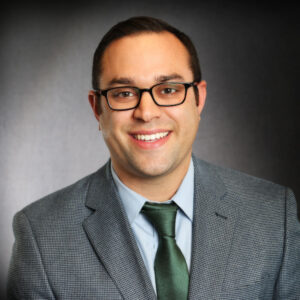In today’s ever-changing and fast-paced digital age, associations can significantly enhance their impact and efficiency by harnessing the power of technology. From streamlining operations to expanding outreach, here are three pivotal ways technology can benefit non-profits.
Enhance Operational Efficiency
With the incredible proliferation of AI tools on the market, it is almost impossible to not run into this tool. There are more than 10,000 AI tools and that number is expected to continue to grow. These tools can help you with a wide variety of tasks that help to increase your and your associations efficiency. Transparently, this blog used AI to help guide its outline; while not all the ideas were spot on, it provided enough structure to get started quickly.
When thinking about how to become more efficient, identify the goals you’re trying to achieve. Are you looking to produce more? Reduce the amount of staff time? Allow your staff to focus on other tasks? Knowing these answers lets you select the best solutions and identify potentially what can be automated to assist you.
Check out a site like There’s an AI for That to quickly look through the multitude of tools that exist to potentially help you. A quick win in this area are AI note takers like CoPilot, Otter.ai, Zoom AI Assistant and Fireflies.
Integrations and Database Automations
As the number of technology solutions we employ grow, it is important to think about how those technologies connect with one another. For your members, consider employing single sign-on (SSO) as often as you can with third-party solutions. Not only does this reduce the number of passwords and accounts your members need to create, it also drives them to you central community on a more consistent basis.
For your staff, consider how you can connect your tools; can your email marketing platform be integrated with your database or CRM? Chat with your team to ask about the most important connections you could make to help them do their jobs better.
Finally, explore ways to create automation within your database. Discuss with your staff team the typical flow for things like membership intake, renewals, certification communications, etc. and determine how to create instantaneous action on those items which are triggered when certain criteria are met. This allows your team to focus on the building relationships rather than on tasks.
Improved Reporting and Transparency
Technology empowers non-profits to maintain transparency, build trust with stakeholders, and ensure accountability. Utilizing dashboards and reporting tools enables associations to provide stakeholders with real-time updates on fundraising progress, project milestones, and financial health. Work to build these reports within your databases, CRMs and other tools to shorten the reporting time frame and to lessen the need to manipulate data in an external system like Excel. When your stakeholders have information at their fingertips, it allows them to focus more strategically.
Internally, using tools like Asana or Basecamp create stronger transparency in a team and increase communication around projects. Tools like this may take time setup and to establish habits in using the tools, but once they are a part of the daily routine, they allow for higher level internal discussions.
Technology offers associations invaluable tools to amplify their impact, improve operational efficiency, and build stronger relationships with their communities. By strategically integrating technology into their operations, associations can navigate challenges more effectively, scale their initiatives, and ultimately fulfill their missions with greater success. We must embrace technology as our members and customers continue to see its advantages in the broader landscape.

Nick Estrada, CAE, CMP
Nick Estrada, CAE, CMP joined the RGI team in 2017. Nick holds undergraduate degrees from Indiana University Purdue University Indianapolis in Forensic and Investigative Sciences (BS) and Chemistry (BA), and a Masters of Education from the University of South Carolina in Higher Education and Student Affairs. Additionally, he has extensive experience in association management and membership expertise.

